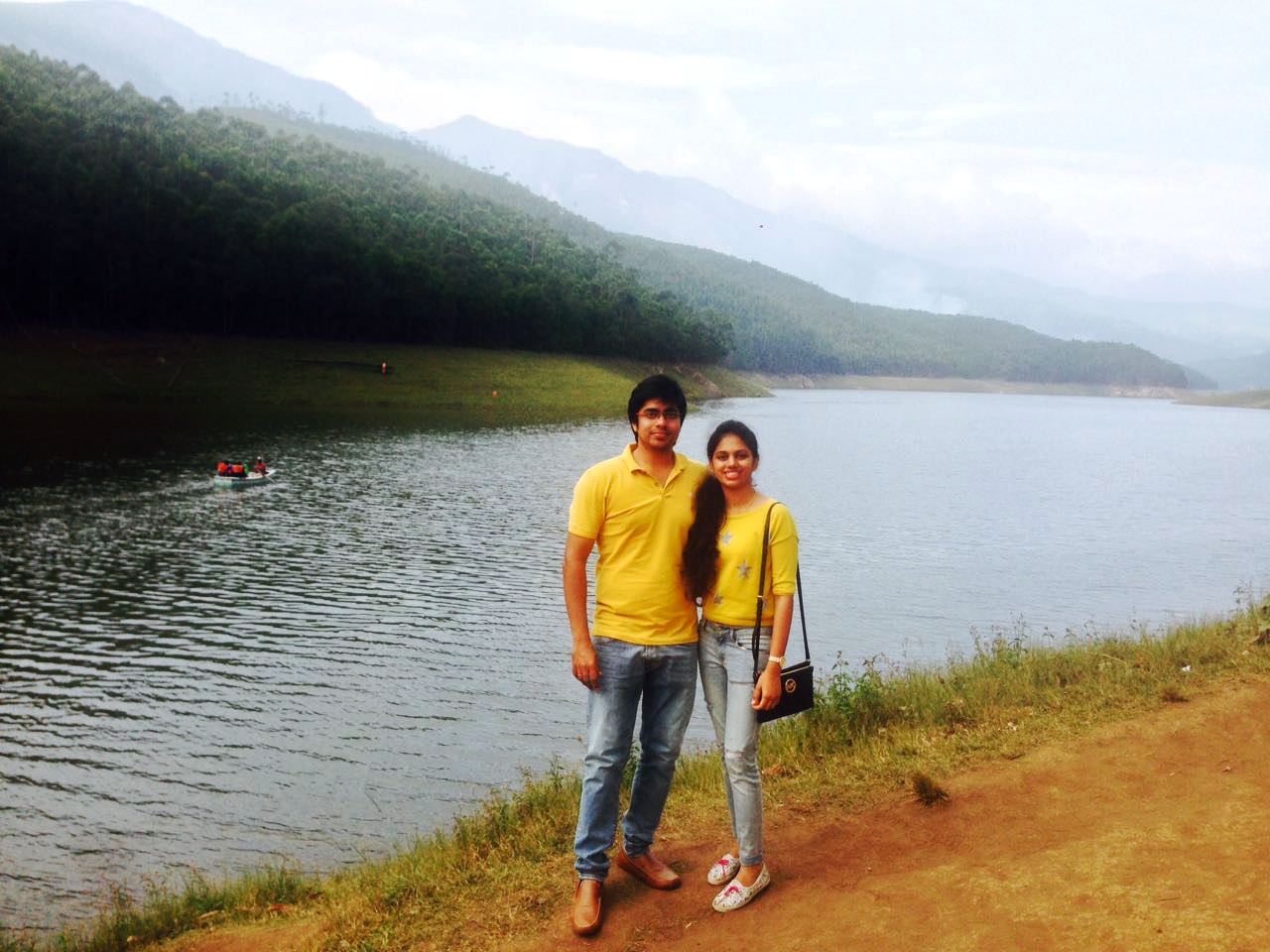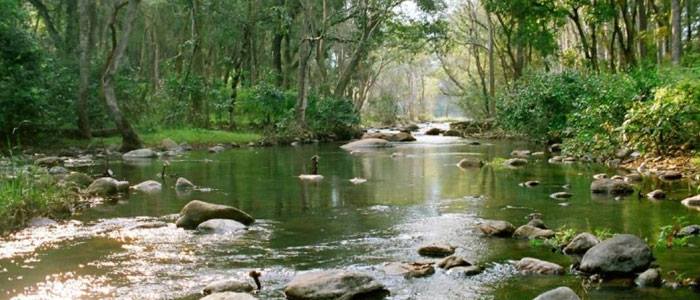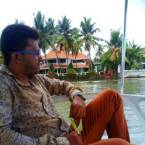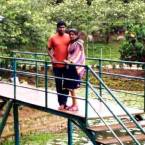- Call Us: +91-8281645641
- [email protected]
Visiting the alluring destinations that are part of the golden triangle Delhi, Agra, amritsar and Jaipur is a great experience to every traveler. And if you get a chance to enjoy a vacation witnessing the beauty of the golden triangle.
Deluxe Hotel
Delhi Hotel Regent Grand –02 nights
Agra Hotel The Retreat –01 night
Jaipur Hotel Four Points by Sheraton –02 nights
Amritsar Hotel Golden Tulip –02 nights
Superior Hotel
Delhi Hotel Clarks Inn –02 nights
Agra Hotel Pushpvilla –01 night
Jaipur Hotel Clarks Inn –02 nights
Amritsar Hotel Khyber Continental –02 nights
Standard Hotel
Delhi Hotel Bonlon Inn –02 nights
Agra Hotel Orchid –01 night
Jaipur Hotel Royal View/ Jaipur Heritage –02 nights
Amritsar Hotel R V Regency –02 nights
For package Cost and Discounts Contact
Ph:+91-8281645641
E-mail :[email protected]
After breakfast, check-out from hotel and drive to Agra. Upon arrival transfer to the hotel. Later visit Emperor Akbar
the Great commissioned the Agra Fort that is also sometimes called Red Fort of Agra. During the reign of emperor
Jahangir, the capital was briefly shifted to Lahore but Agra became the seat of Mughal capital once again in the reign
of Akbar. Akbar became emperor in 1556 and when he consolidated himself sufficiently, he started the construction of
Agra Fort in the year 1665. The fort was completed in the year 1671.Agra Fort is among the finest examples of the
fusion architecture that has dominated the Mogul period. The assimilation of these different styles has given the
buildings within the fort a distinctive look. To name a few, for example, the Jahangir Palace built by Akbar is the most
magnificent blend of Persian and local style whereas Divan-e-Aam mixes subtleness of Turkish exteriors with the
complex pattern of Persian architecture. Later do shopping at local market. Overnight at hotel in Agra.
Enjoy Sunrise at The Taj Mahal – Seventh wonder of the world. Taj Mahal of India – “the epitome of love”, “a
monument of immeasurable beauty”. The beauty of this magnificent monument is such that it is beyond the scope
of words. The thoughts that come into the mind while watching the Taj Mahal of Agra is not just its phenomenal
beauty, but the immense love which was the reason behind its construction. Mughal Emperor Shah Jahan got this
monument constructed in the memory of his beloved wife Mumtaz Mahal, with whom he fell in love at the first sight.
The very first sight of the Taj Mahal, the epitome of love and romance leaves one mesmerized. Later return back to
hotel and take breakfast at the hotel. After breakfast, check-out from hotel and drive to Jaipur,en-route visit: The
Walled city – Fatehpur Sikri is actually a historical capital city made out of twin village of Fatehpur and Sikri that are
situated 45 odd kilometers from the city of Agra. The city is situated amidst barren ridge. Emperor Akbar established
this city, to serve jointly with Agra, as the imperial capital of Mogul empire. The most interesting monument in the city
is the mighty Buland Darwaza that guards the entrance of the Gate. As you enter the gate, Jama Masjid falls to your
left. The beautifully carved tomb of Khwaza Salim Chisti is situated in the middle of the big square courtyard. As you
take the right gate, Sikri fort falls on your left and so are Panch Mahal and Jodha Bai Palace. Architecture of all these
buildings has a subtle blend of Hindu and Islamic architectural designs. Fatehpur Sikri has all these and much more.
Later continue journey to Jaipur. Upon arrival transfer to the hotel. Overnight at hotel in Jaipur.
After breakfast, later take a city tour. Amber Fort – Amber Fort is located in Amber (Jaipur), which used to be the
capital of the Kachhwaha clan, till Jaipur was made the official capital in 1727. The Amber Fort looks stunning, all-built
in white marble and red sandstone. To add to its charm, Maotha Lake makes its foreground. The crystal mirror image
of the Fort, on the still waters of the lake, seems to be a beautiful illusion. Amber Fort is usually pronounced as Amer
Fort. In 1592, construction of the Fort was started by Raja Man Singh I. However, the Amber Fort took its present form
during the reign of Raja Jai Singh I. Hawa Mahal is a major landmark and a famous tourist attraction of Jaipur. The
Palace offers a beautiful sight to behold. The splendid Rajputana architecture of Hawa Mahal, still speaks the glory of
the royal family. However, one can also find a glimpse of Mughal architecture, which is blended perfectly to make it
different from others. The literal meaning of Hawa Mahal is Palace of Winds. Hawa Mahal was built by Maharaja
Sawai Pratap Singh in 1799. Hawa Mahal is a pyramid-shaped facade with five stories. It has 953 small windows
decorated with tiny lattice work. These pink sandstone windows commonly known as “Jharokhas” are constructed in
such a style, that it looks like a giant honeycomb. City Palace forms one of the most famous tourist attractions and a
major landmark in Jaipur. The beautiful palace was built by Maharaja Sawai Jai Singh during his reign. Among the
various forts and palaces of Jaipur, City Palace stands apart, with its outstanding art and architecture. City Palace
complex covers a huge area, which is divided into a series of gardens, courtyards and buildings. Initially, Raja Jai
Singh built the outer wall occupying a huge area. The additional grand buildings were constructed later by the
succeeding rulers.Jantar Mantar at Jaipur is the largest stone observatory in the World and this feature makes it, a
special destination for a traveler. Jantar Mantar of Jaipur is one of the five astronomical observatories built by
Maharaja Jai Singh, the founder of Jaipur. During the period between 1727 and 1733, Jantar Mantar took its form and
structure. Initially Jantar Mantar was named as Yantra Mantra, which means instruments and formulae, but due to
mispronunciation of the term, it is changed to the recognized name. Later return back to hotel. Overnight at hotel.
After breakfast, check-out from hotel and drive to Delhi. Upon arrival transfer to the hotel. Later drive to take a
combined tour of Old Delhi and New Delhi. The Older part of Capital takes you to the Red Fort with its Pearl Mosque
and exquisite audience halls, Jama Masjid Mosque, with its marble domes and slender minarets; Raj Ghat (where
Mahatma Gandhi cremated). The Modern area takes you on a drive along Rajpath, New Delhi’s broadest avenue, and
see The House of Parliament, the diplomatic enclave and the President’s House – The Royale Residency of the former viceroys and now the President of India. Visit the India Gate and The Qutub Minar built in the 12th century.
Evening drive back to Hotel.
After breakfast, check-out from hotel and drive to Amritsar. Upon arrival transfer to the hotel. Overnight at Hotel.
After breakfast, later visit:-Golden Temple – Also called Sri Harmandir Sahib, the most visited tourist attraction of Amritsar.
The Golden Temple was laid by Guru Ram Das in the 14th century.The Golden Temple, situated in Amritsar, Punjab, is the most sacred temple for Sikhs. It is acclaimed as one of the holiest sites of the Sikhs. It has four doorways and gorgeously decorated arches. Reflecting influences of both Hindu and Muslim styles of architecture, the temple standing in the middle of a tank, exudes tremendous architectural brilliance which draws the attention of numerous tourists around the globe. Although principally a pilgrimage spot for the Sikhs, it is visited by people of all religions and proves to be one of the greatest tourist attractions in Amritsar on your tour to India. Later proceed to visit Jallianwala Bagh – Is a peaceful park with picnicking families and college kids, but move to a section of the wall which still has visible bullet marks, and you will be reminded of one of the most horrific events in colonial Indian history.
When the Rowlatt Act (1919), which gave the British the power to arrest and imprison Indians without a trial if suspected of sedition, was imposed on Indians it was severely criticised and regular hartals (strikes) were organised to protest the law. Then Lieutenant Governor of Punjab, Sir Michael O’ Dwyer, arrested an Indian leader causing great unrest among the people. On April 13,1919 (also the festival of Baisakhi) around 10,000 people gathered at the Jallianwala Bagh to peacefully protest the new law. General Dyer had been called to Amritsar to return the city to order.
He arrived at the Bagh with 150-armed soldiers, ordered the crowd to disperse and two minutes later inhumanly commanded his troops to open fire. The square was surrounded by high walls and the soldiers had blocked the only entrance (and exit) to the compound. The firing (1650 rounds) continued for about 15 minutes and people were shot as they tried to jump the wall while others drowned after they jumped into the well to escape the relentless onslaught of bullets, most of which found their mark. About 400 people (including children) died while 1500 were left wounded.
Though there was an international outcry over this horrific uncalled-for massacre neither Dyer nor O’Dwyer was ever charged with any crime. In response to this massacre, Nobel laureate Rabindranath Tagore returned his knighthood and Gandhi began his program of civil disobedience announcing that ‘co-operation in any shape or form with this satanic government is sinful’. In 1997 Queen Elizabeth II visited Jallianwala Bagh and though she laid a wreath on the memorial to the victims no official apology was made. Jallianwala Bagh is a five-minute walk from the Golden Temple.
The stone well has been preserved as a monument to the victims (120 bodies were recovered from the well) and the “flame of liberty,” a 45 foot flame-shaped red sandstone pillar set in a pool, was built in 1961 as a memorial. The park is open from 6 am to 7 pm in summer and 7 am to 6 pm in winter. The Martyr’s Gallery which features portraits of heroes involved in the incident, is open from 9 am to 5 pm in summer and 10 am to 4 pm in winter. Evening visit Wagah Border – Located at a distance of 28 kilometers from Amritsar. It is the only border crossing between India and Pakistan. It is an army outpost to protect check intrusion from Pakistan and prevents any Indian from going to Pakistan. Special buses and taxies from Amritsar take the tourists to Wagah Border. At the border outpost there is a complex of buildings, roads and barriers on both sides. At the entrance of this outpost, there is a sightseeing gate with an inscription “Swarna Jayanti”. From this a panoramic view of the landscape is seen. There are electrified fences with 66,000 volts of electric current. Later drive back to the hotel. Overnight at hotel.
After breakfast, check-out from hotel and drive to Delhi Airport to depart the journey.

I got your reference from a friend in Bangalore. Because I was traveling alone I checked across for a good travel agent. Sunny Holidays Kerala arranged a perfect driver Mr.Prakash for me. He was so kind and helpful throughout the trip. It was a great experience. Thank you. Date of travel: January 2023

We would like to take this opportunity to convey our thanks to Sunny Holidays Kerala. It was truly a memorable one. The hotels, pickups, tour sights , our driver cum guide Mr.Chikku & other arrangements made by your team were superb. Houseboat at Alleppey and our stay at Kumarakom was awesome. Group of 12 Members. Date of travel January 2023

We had a Great Experience at Briar Stanmore Garden Bungalow Valparai. Our group of 5 family with small kids. Really thankful to Sunny Holidays Kerala for suggesting Briar Stanmore Bungalow at Valapri. We asked for a location to spend our vacation with family. Not Munnar because we had been there many time. For instance we need a similar weather. Briar Bungalow Valparai is a Great place to spend your vacation with Family and dear ones. The food was awesome. Thank you - www.sunnykerala.com Date of travel: January 2023

Travel date : September 2022. We had a great time at Morickap Resort Wayanad. Thank you Sunny Holidays Kerala for suggesting the Resort in Wayanad. Our Kids too enjoyed a lot as there are many indoor and outdoor activities in the Morickap Resort Wayanad. We definitely would recommend Sunny Holidays Kerala to Our Family and Friends.

Date of Travel - June 2022. Extremely satisfied with your Kerala Honeymoon package.Stay was amazing especially the view from hotel at Munnar - Amberdale resort Munnar- was beautiful.Alleppey Stay at houseboat was too good. Rafi is super friendly Driver and customer centric. He is quite attentive to our needs , also helped in clicking beautiful pictures of us. I would definitely recommend sunny holidays Kerala to whoever planning a trip to Kerala and according to availability, I'd like you to arrange the same driver for them too. Thanks for your assistance in making the trip memorable.

We reached back safely. Thanks for your service.It has been a very good experience in Kerala.Our stay at "The Leaf Munnar" was highly satisfying. Please recommend it to your guests.Coconut Lagoon at Kumarakom too was a good experience. Houseboat at Alleppey - Food was very tasty and the ride was also really enjoyable one. Finally travelling with the Driver Vignesh, has been a very pleasant experience. He insisted that we take a jeep safari in Munnar and it turned out to be a memorable one, the Driver took good care of us. Overall, I am highly satisfied with the service..Thank you Sunny Holidays Kerala. Date of Travel November 2016

We had availed the Cab and Houseboat service from Sunny Kerala. We had a good experience. It was for 7 Nights 8 Days Kerala Tour Package in the Month of November 2016. The driver was very nice person and also helpful. The Houseboat at Alleppey was Wow...Great and the food was also good. We really enjoyed the Service which was very much in our budget.

We had a great time at Gavi. The Gavi Eco Tour was very well arranged by Sunny Holidays Kerala. We were a Family of 5 Members and all enjoyed the trip through the Forest. We started the Gavi Tour early in the Morning and all the food was arranged for us. All together the Gavi Eco Tour was a great and new experience for all of us.

Thank You Sunny Holidays Kerala Team for the excellent Service you provided. We enjoyed a lot. Good selection of Resorts at Munnar and Houseboat at Alleppey. The houseboat staff was very helpful and the food was awesome and mouthwatering. The Driver was a good guy. Thanks once again for making our Honeymoon trip so wonderful. Travel Date Sep 2016

We enjoyed our stay at munnar for 2 Nights. When Sunny Holidays Kerala arrange a Kerala Tour Package it is too good and will be good always as I am coming for the second time with you. Thank you Team Sunny for all the help and making us holiday wonderful....Travelled in Aug 2016

We had a customised Kerala honeymoon package for 5 Nights 6 Days which included Munnar, Thekkady,Alleppey and Cochin.We really had a great time. This was our honeymoon trip and first time to Kerala. Sunny Holidays Kerala helped us in arranging a honeymoon package which was according to our Budget and all the resorts and houseboat were very good and especially very safe for couples. Need to say about the driver - He was a good and helping person. He was with us throughout the journey. We will recommend your service to our friends and also wish to use your service for our next trip to Kerala... We travelled in the month of July 2016

Sir Thank you very much , everything was too good. Driver Subinesh was very nice person. Overall the trip was very nice experience. Many THANKS for arranging the kerala honeymoon package within the budget with very good service. 2 Nights Munnar and 1 Night alleppey. Date of Travel May 31 to June 3rd 2016

We came to know about Sunny Holidays Kerala through online. We had calls from different Tour Operators but we got the best rate for 3 pax from Sunny Holidays Kerala for the alleppey houseboat. We are from Thootukudi,Tamil Nadu. They offered us good package at very competitive rate. We had made good contacts with them and they were ready to clear all our doubts. We were so happy with the service provided and we will surely recommend "Sunny Holidays Kerala" to our friends and family. Date of Travel 15th May 2016

We had a great stay at Munnar, It was well arranged. Our kid was all the more happy at the Capithans Bungalow Munnar. Thanks Sunny Holidays Kerala Team for the great trip. We travelled in May 2016

Guest response about Houseboat Trip

We had a great time at Alleppey. We had booked the houseboat for 2 Nights and we really enjoyed the stay. The food was awesome. All the staff were so helpful. We are from South Africa and thanks a lot to Sunny Holidays Kerala for arranging this great memorable trip. Date of trip - JUNE 2015

Munnar and Alleppey trip which happened from 16th April till 20th April 2015, was amazing. You took care of us well by booking and arranging. Nice hospitality was received. Very good and cooperative driver Mr. Denish. Good boat House and nice caring crew members.Thanks to all of you. Had nice time in this trip.

We had a great group package trip with Sunny Holidays Kerala. We were a group of 14 members and we had booked the resort and transport via Sunny Holidays Kerala in Munnar and Thekkady. We had a great welcome at the airport and had a brief intro regarding the itinerary. All the members enjoyed the tour and we are all happy and satisfied with the service. Great hospitality....

I recently completed a tour organized by Sunny Holidays Kerala. It was a budget kerla holiday package. My family and I had a great time in Alleppey & Kochi. The accommodations were nicer than we expected and very much within our budget. The food in the house boat was marvellous. Each and every moment of the trip is memorable. I thought I would provide some feedback and overall thank you for organizing a very memorable tour.